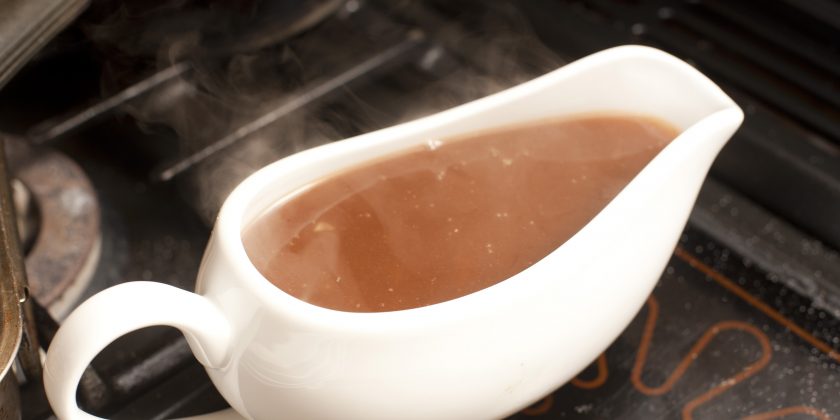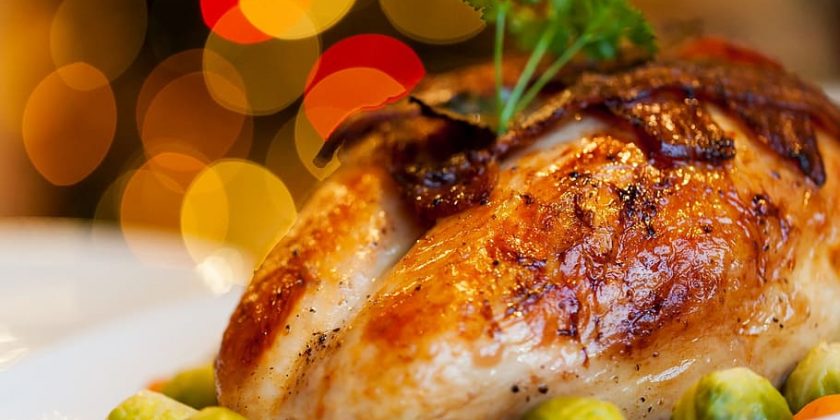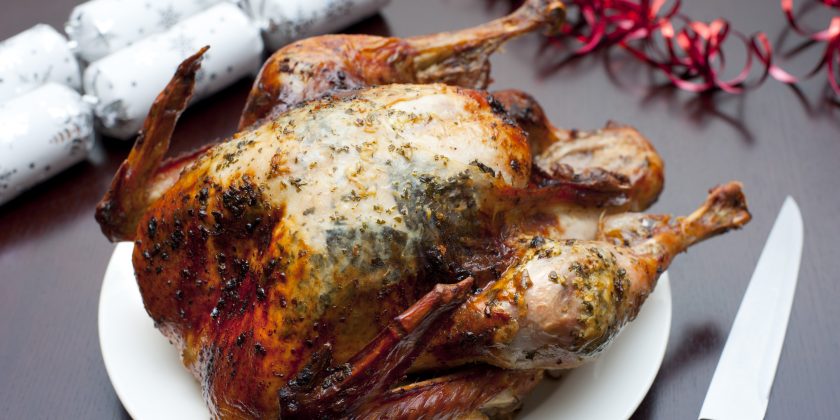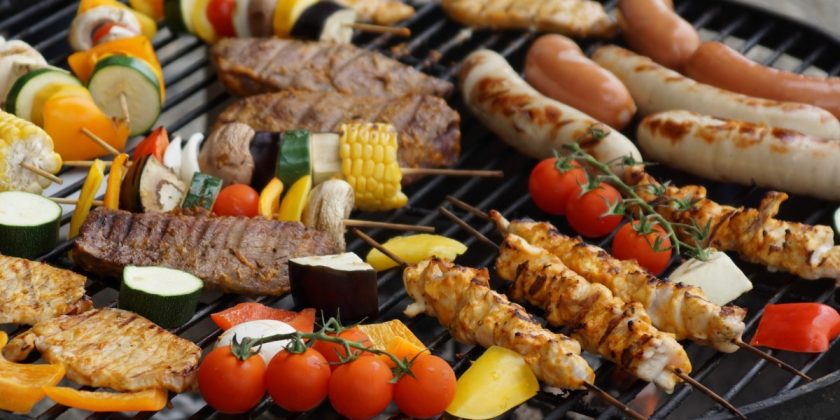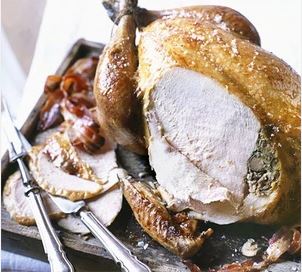
This recipe will give you enough chestnut stuffing to put half in the turkey, leaving the other half to make a delicious stuffing loaf. You can cook the stuffing loaf while your turkey rests, giving you a good window to make your gravy.
Ingredients
- 150ml madeira wine, sherry, or port
- 20g pack dried porcini mushrooms
- 2 onions , halved and sliced
- 25g butter , plus extra
- 15g pack thyme , use the leaves and reserve the stalks
- 2 x 454g packs Cumberland sausages , skins removed
- 200g pack whole cooked chestnuts
- Zest 1 lemon (If you are following our recipe on how to roast a turkey, take the zest from the lemon that you will be juicing.)
- 15g pack flat-leaf parsley , chopped
- 85g fresh breadcrumbs
- 10 rashers streaky bacon
Method
- Pour the madeira wine, sherry, or port into a large mixing bowl, then crumble in the mushrooms. Fry the onions in the butter for 10 mins, until golden. Cool, then mix with the thyme leaves, the mushrooms and their soaking liquid, and all remaining ingredients, apart from 8 of the chestnuts and the bacon. Season well.
- Set aside half of the chestnut stuffing. Line a greased 500g loaf tin with bacon. Pack the rest of the stuffing into the tin, then bring the rashers round over the top and secure in place with cocktail sticks. Use the reserved chestnuts to fill the spaces where the bacon meets. Chill until ready to cook. This will keep in the fridge uncooked for 2 days or can be frozen for up to a month.
- Pack the reserved stuffing into the neck end of your turkey. Secure the neck skin with skewers and tie the legs together. Continue preparing the turkey according to your preferred method.
- Once the turkey is cooked, leave to rest and put the chestnut stuffing loaf into the oven. Cook for 30 minutes at 190C/170C fan.
Traymoor at Christmas
This Christmas, to make things easier and more economical, we have put together a range of Christmas meat hampers. If you are considering buying several items, consider one of these packs and cut costs.

